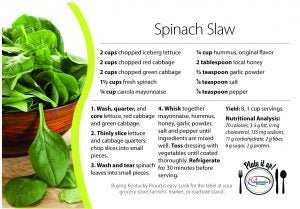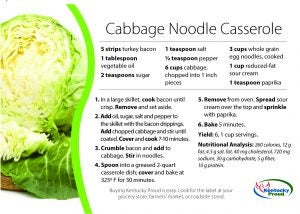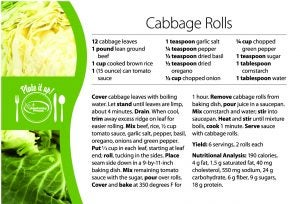Seasonings
Published 8:40 am Wednesday, June 21, 2017
Cabbage for Days
BY ALETHEA PRICE
The veggie with a surprising amount of benefits can be eaten numerous ways
If you’ve visited the Farmers Market recently, I guarantee you’ve seen plenty of cabbage around. The reason I chose this title to re-introduce you to cabbage is because it is truly an abundant vegetable. I swear you can buy a small head of cabbage and use it to make 15-55 recipes. OK, maybe not that many — but it sure seems like cabbage never ends.
Cabbage is the gift that keeps on giving in terms of being a low calorie, high fiber food. As part of the healthy and happy colon movement, I’d like to take some time and tell you some things you may not know about cabbage.
This is a breaking news food announcement: Brussels sprouts are not baby cabbages. They’re actually a completely different plant. Cabbage comes in many shapes and sizes. Cabbage around here can have thick green or purple leaves. Chinese cabbage, such as savoy, napa and bok choy, has thinner leaves. No matter what variety you choose, they all make great additions to your plate and your health.
Here are some great reasons to try to eat all the cabbage from the garden and farmers market. Like broccoli, cabbage is a member of the cruciferous “keep it movin’” vegetable family. That means it may reduce the risk of some forms of cancer, including colorectal cancer, and support a healthy digestive system. Cabbage is also low in fat and in calories—1 cup has 24 calories. Vitamin A, needed for vision, normal growth, reproduction and a healthy immune system, can be found in abundance in Chinese cabbage. As a strong antioxidant, vitamin A also has great potential for preventing disease. About 20 percent of our daily need for vitamin A can be supplied by a half-cup of cooked Chinese cabbage.
Choose well-trimmed heads of cabbage that are heavy for their size and solid for the variety of cabbage that is being purchased. Leaves should be crisp and free of insects and decay. Yellow, wilted leaves indicate age. Avoid burst or broken heads.
Fresh, uncut heads of cabbage can be stored in the refrigerator for up to two weeks. However, if you plan to eat the cabbage raw or make sauerkraut, it is best to use it within a few days, while the sugar content is highest. The cabbage should be loosely covered. To prevent molding, wash cabbage just before use. Savoy cabbage deteriorates rapidly, so buy it just before you plan to use it.
Cabbage may be served in a variety of ways. For example, you can stuff it; scallop it; make coleslaw, freezer slaw, and sauerkraut; and use it in soup. Something funny I always notice about cabbage is that one head is way more than I ever need for just one recipe. I end up making up to three dishes out of one head. One medium head of cabbage, about 2 1/2 pounds, yields about 9 cups of shredded raw cabbage or 7 cups of cooked cabbage.
OK, so you’ve got your cabbage, here’s what to do before you get started: Remove any wilted leaves, then rinse. To cut, use a large, heavy knife to halve or quarter the cabbage through the stem. Cut around the core and remove it. Cut the head into wedges or slice it into thin shreds or ribbons, depending on how you plan to use it. The inner part of the core can be sliced and substituted in recipes calling for water chestnuts.
Cabbage usually discolors and grows stronger in flavor when canned. Therefore, canning is not recommended unless cabbage is first made into sauerkraut or pickled. Because of the potential for spoilage caused by bacteria, you should follow USDA-recommended procedures when making homemade sauerkraut.
Sauerkraut is cabbage cured in a salt and water solution for three to six weeks. During this time, colors, flavors, and textures change, and the acidity increases through fermentation. The lactic acid formed in the fermentation process helps to preserve the food. If you are interested in canning or preparing your own sauerkraut just let me know and I’ll send you all the info you need to do it safely.
If you have questions or comments about the column, or if you’d like more information feel free to contact me by email at thekitchenagent@gmail.com. Email me and I’ll answer your kitchen questions.








